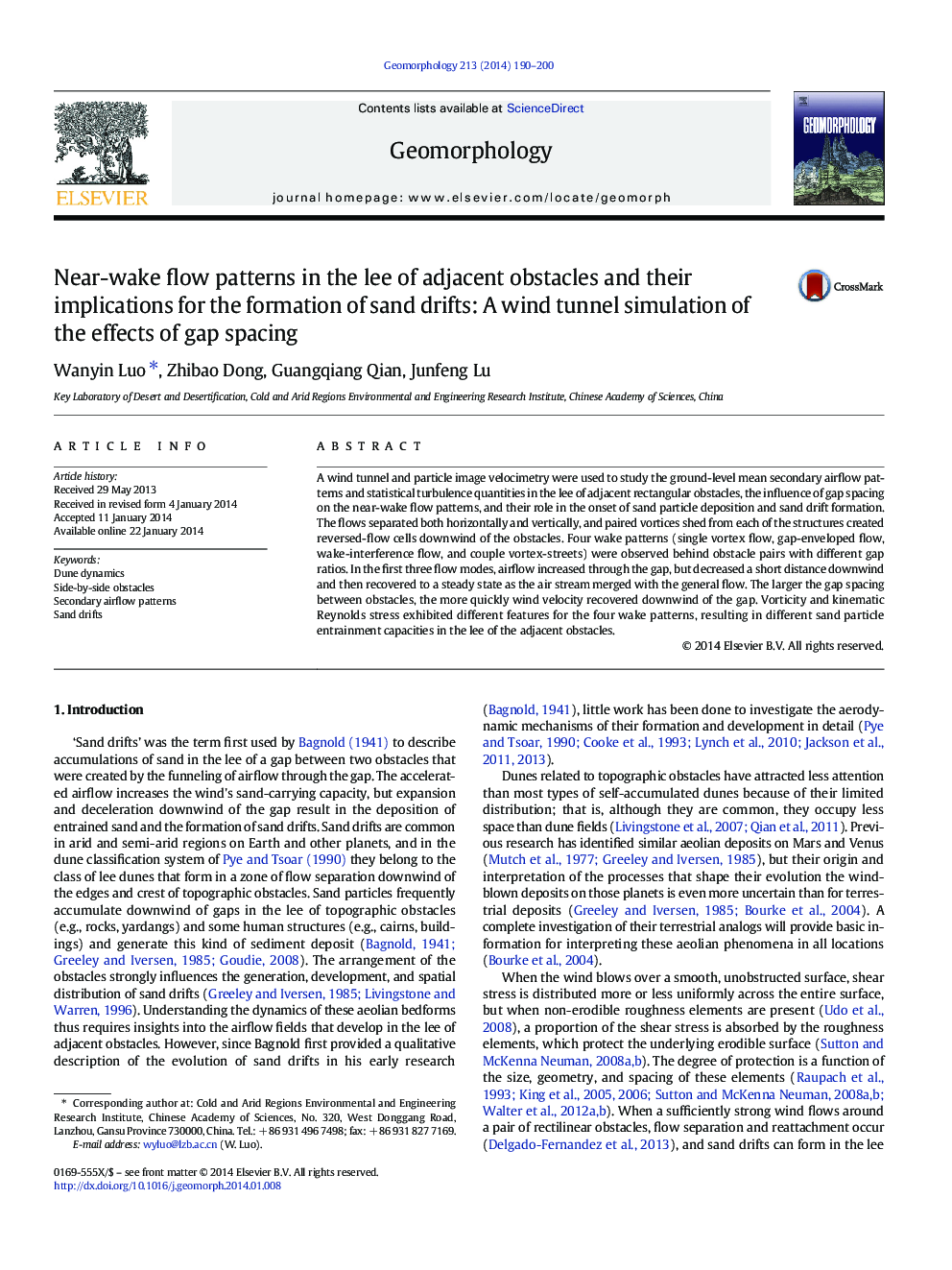| Article ID | Journal | Published Year | Pages | File Type |
|---|---|---|---|---|
| 6432503 | Geomorphology | 2014 | 11 Pages |
â¢Four wake patterns were observed behind obstacle pairs with different gap ratios.â¢Gap spacing was the key factor in determining the secondary airflow structures.â¢Sand drifts evolution process deeply associated with the flow patterns.
A wind tunnel and particle image velocimetry were used to study the ground-level mean secondary airflow patterns and statistical turbulence quantities in the lee of adjacent rectangular obstacles, the influence of gap spacing on the near-wake flow patterns, and their role in the onset of sand particle deposition and sand drift formation. The flows separated both horizontally and vertically, and paired vortices shed from each of the structures created reversed-flow cells downwind of the obstacles. Four wake patterns (single vortex flow, gap-enveloped flow, wake-interference flow, and couple vortex-streets) were observed behind obstacle pairs with different gap ratios. In the first three flow modes, airflow increased through the gap, but decreased a short distance downwind and then recovered to a steady state as the air stream merged with the general flow. The larger the gap spacing between obstacles, the more quickly wind velocity recovered downwind of the gap. Vorticity and kinematic Reynolds stress exhibited different features for the four wake patterns, resulting in different sand particle entrainment capacities in the lee of the adjacent obstacles.
